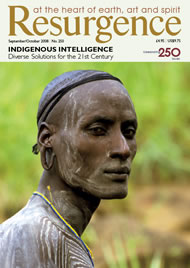AS IF ON cue, the first few years of the new millennium have seen the beginnings of a mind-shift in formal conservation circles. For well over a century, we have lived with the assumption that wildlife and biodiversity can best be conserved in designated protected areas managed by government bureaucracies, aided at best by scientists and conservation non-governmental organisations (NGOs). This has now given way to the realisation that there are a variety of other actors who can be equally, if not more, capable of caring and conserving natural ecosystems; in particular, Indigenous peoples and other ...
There are approximately 1188 more words in this article.
To read the rest of this article, please buy this issue, or join the Resurgence Trust. As a member you will receive access to the complete archive of magazines from May 1966.
If you are already a member, please Sign in







